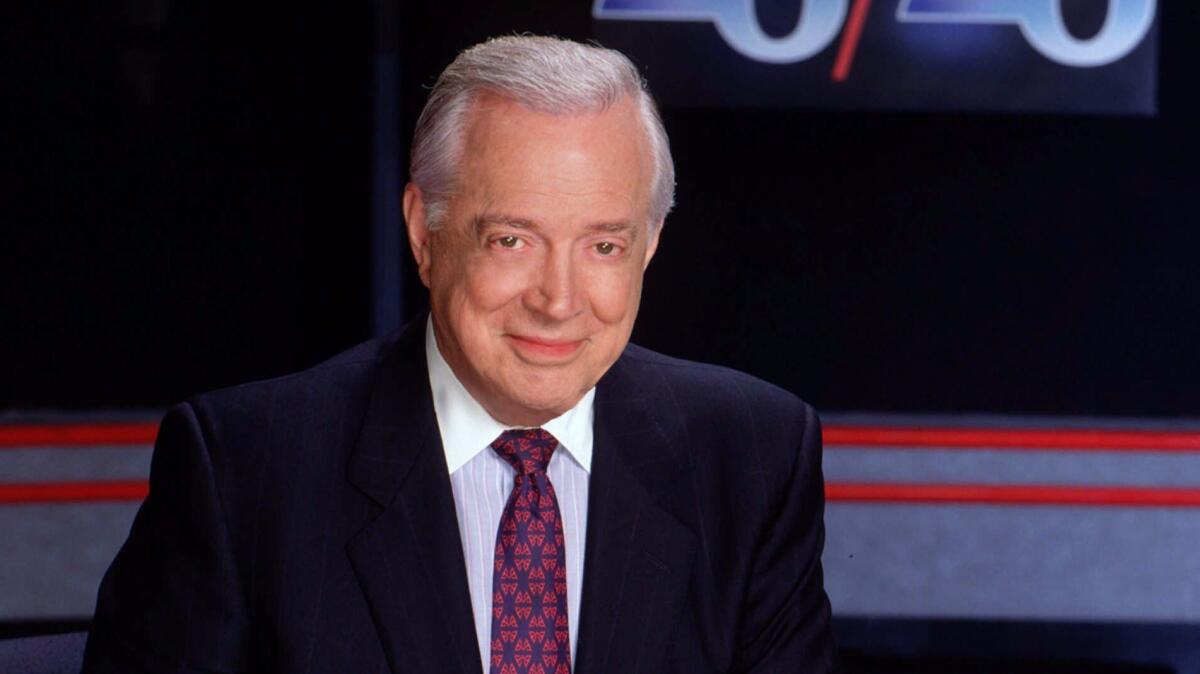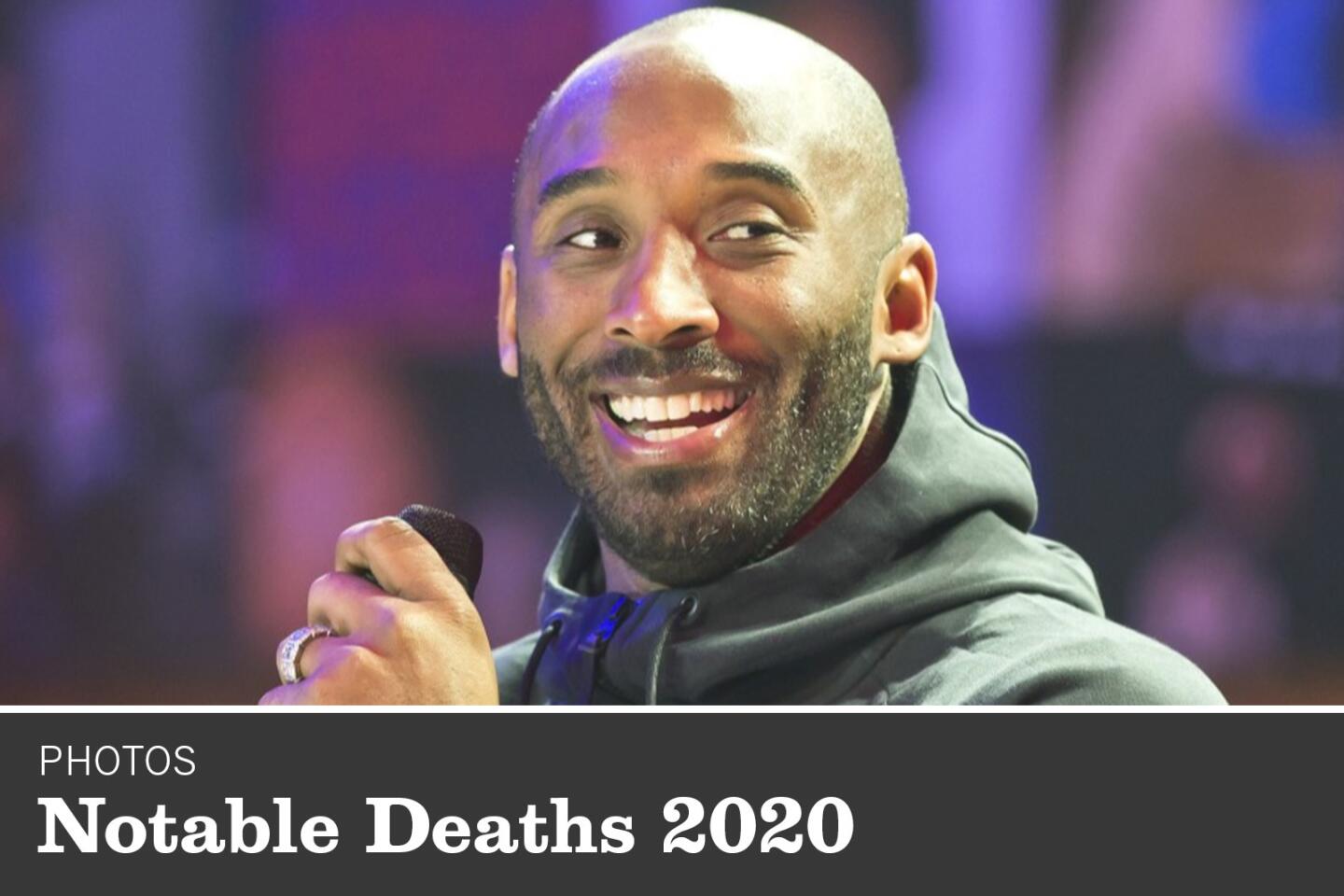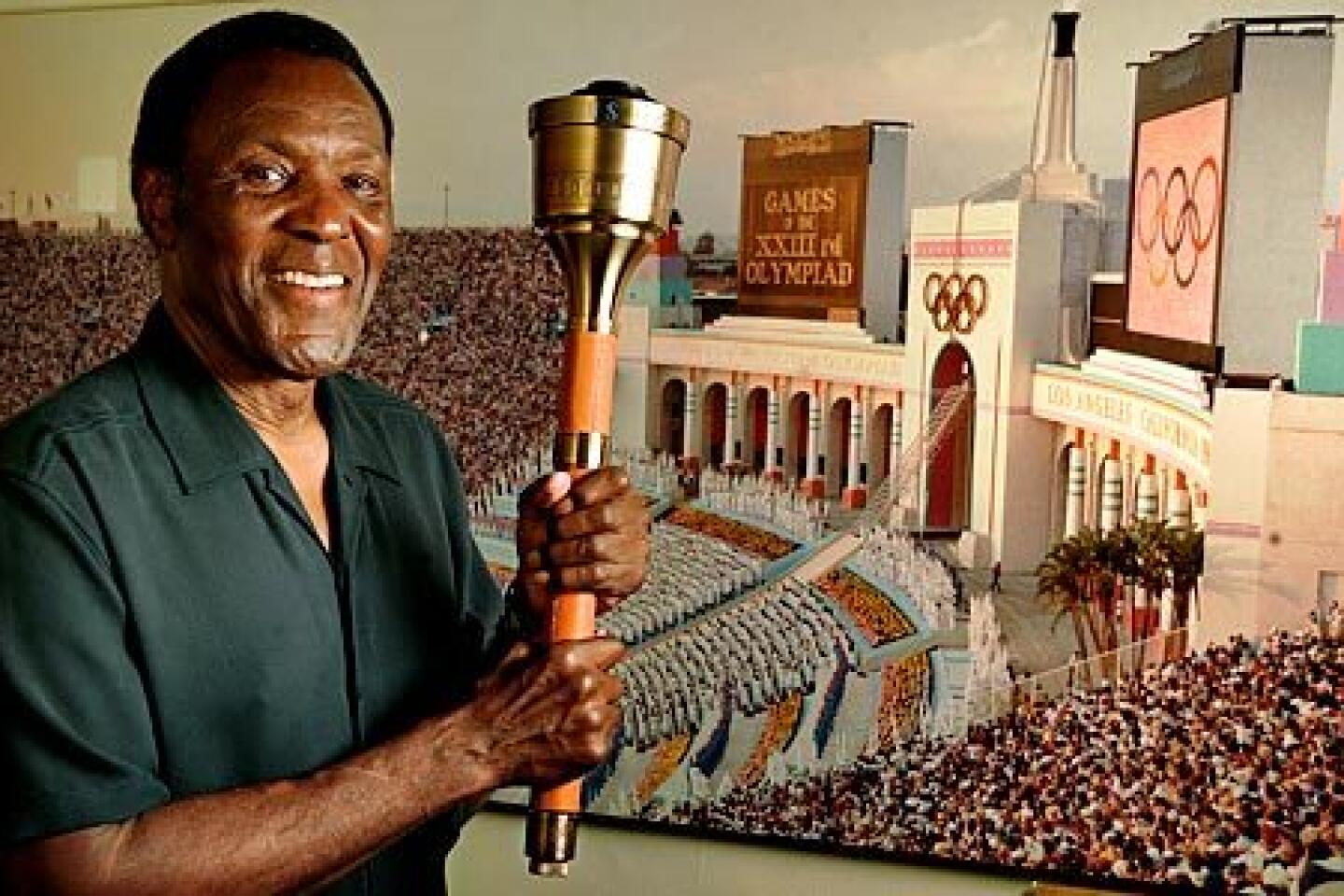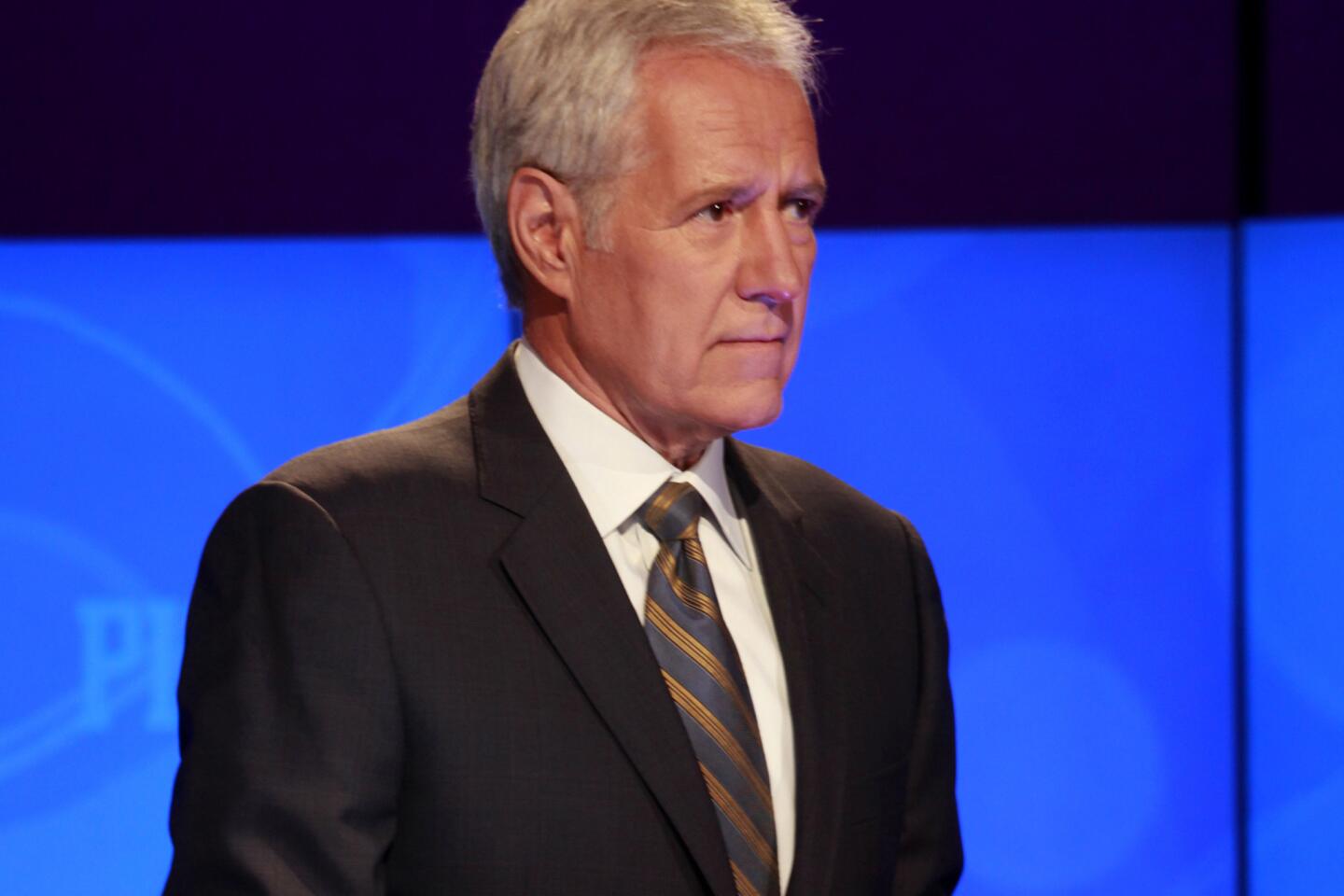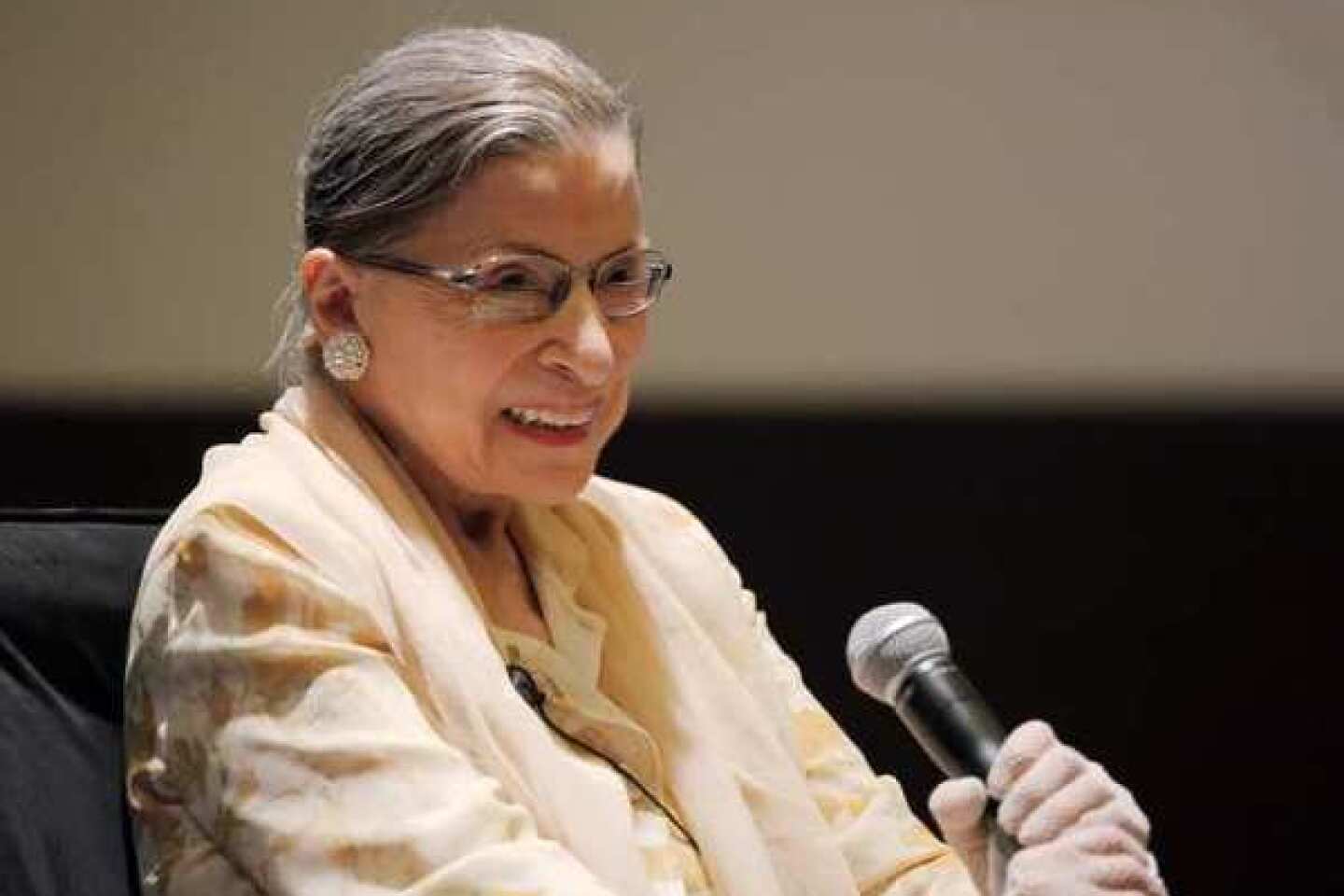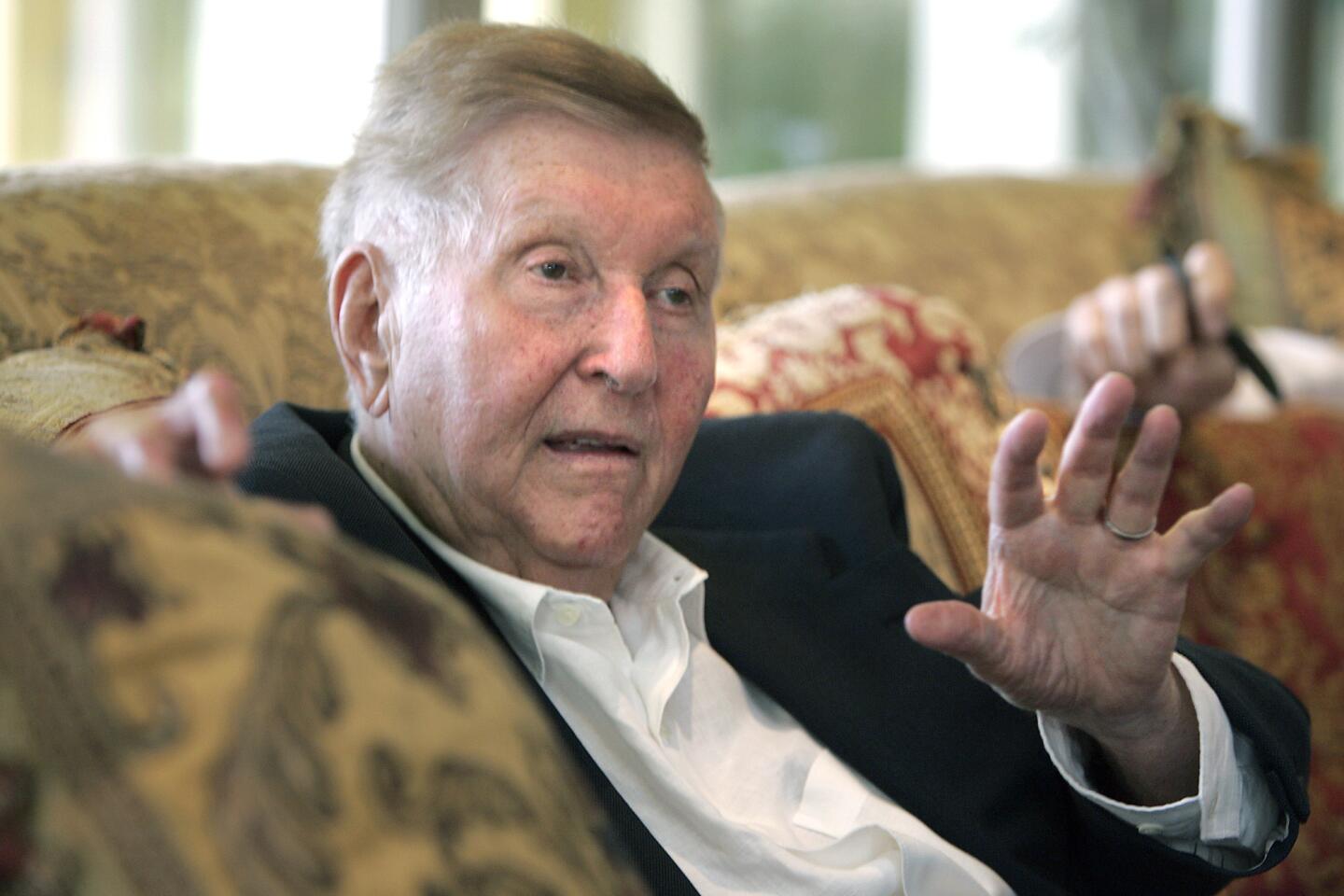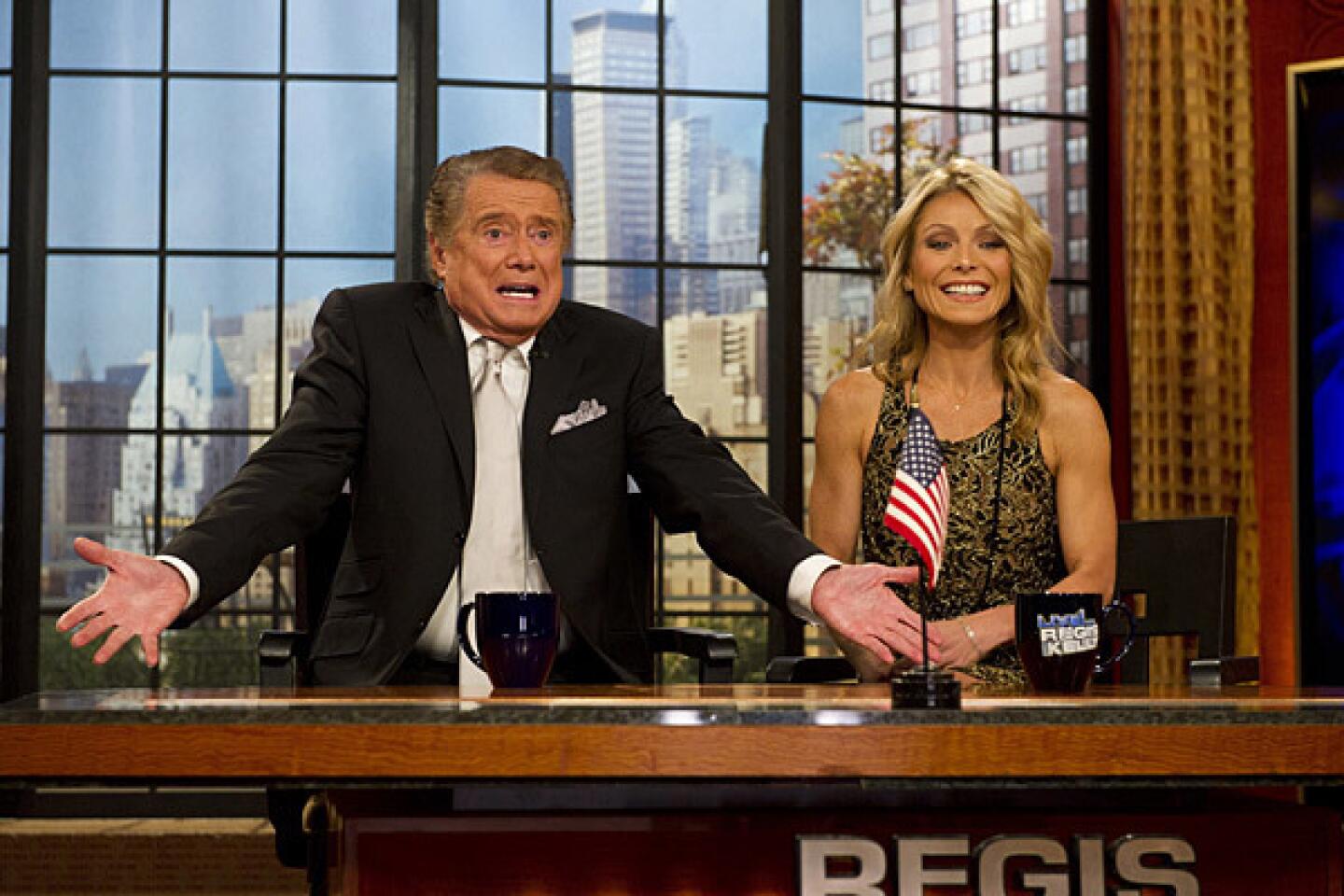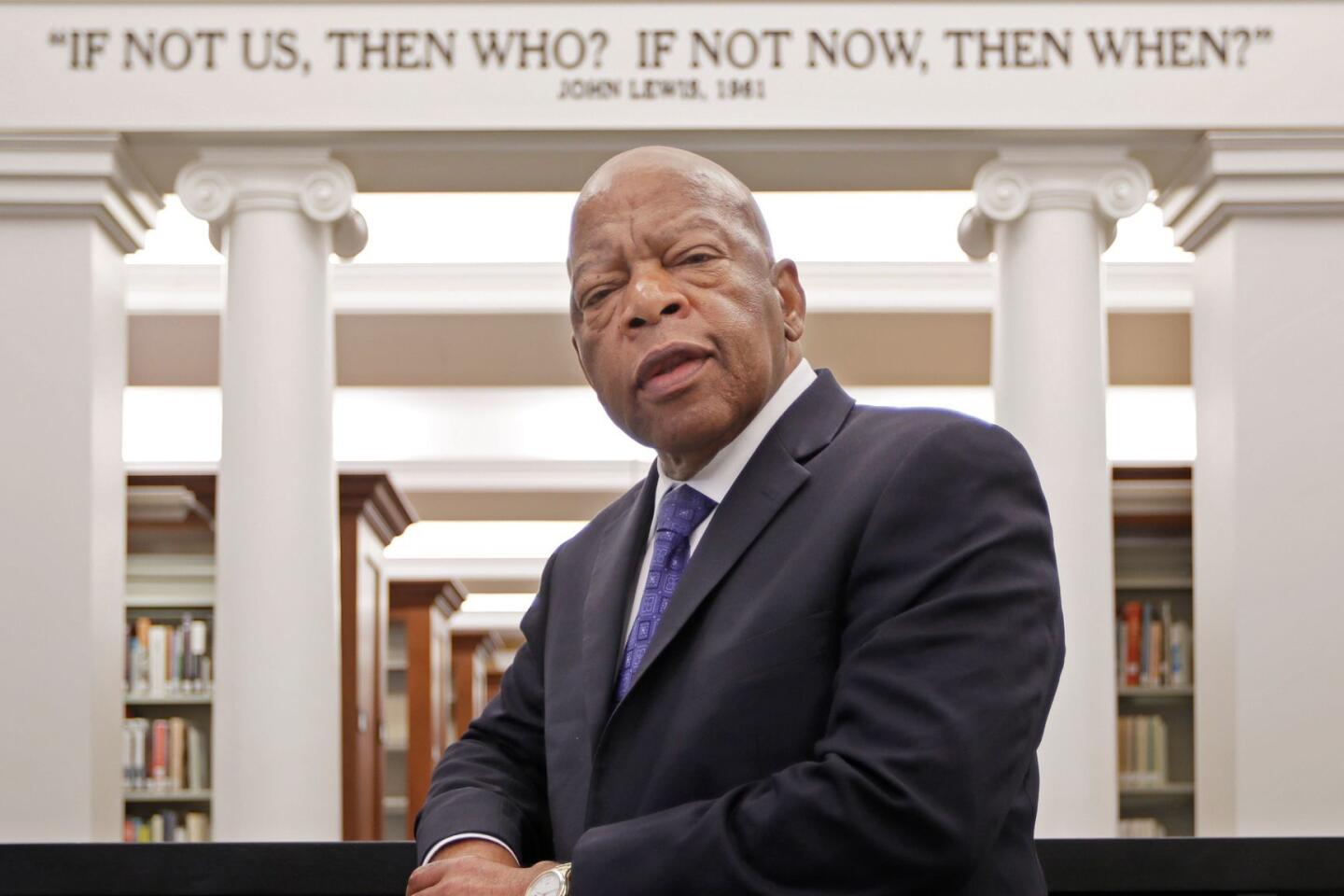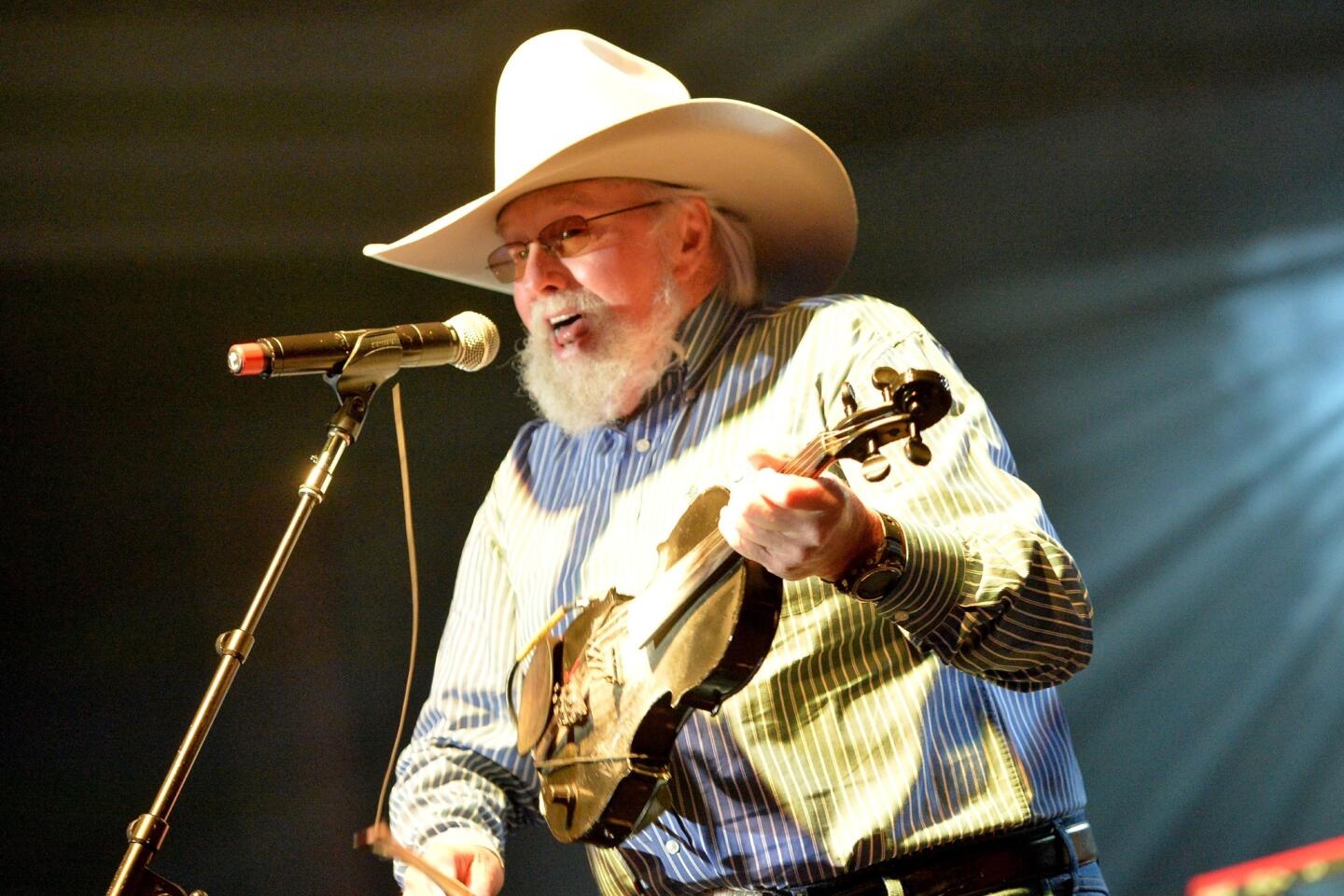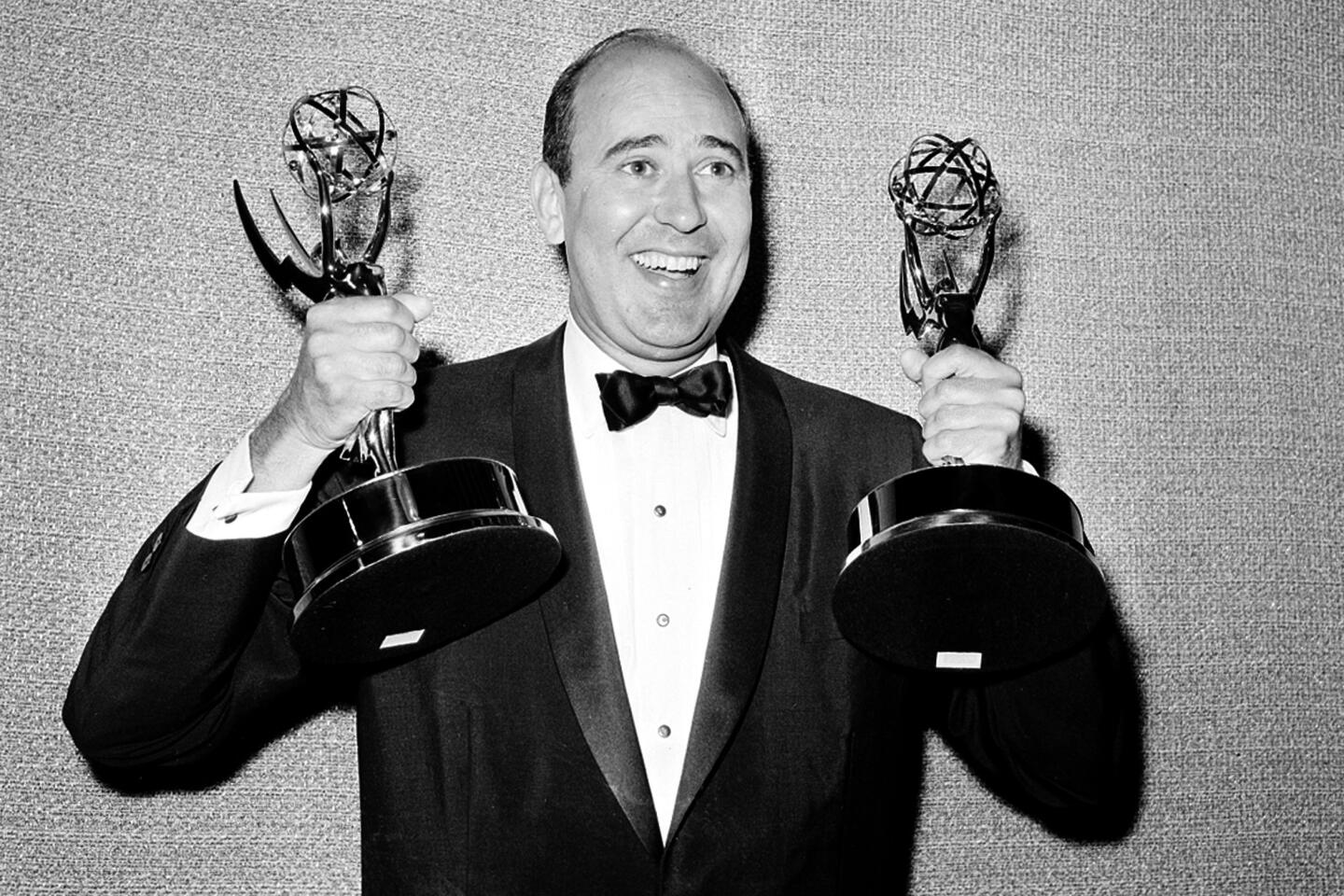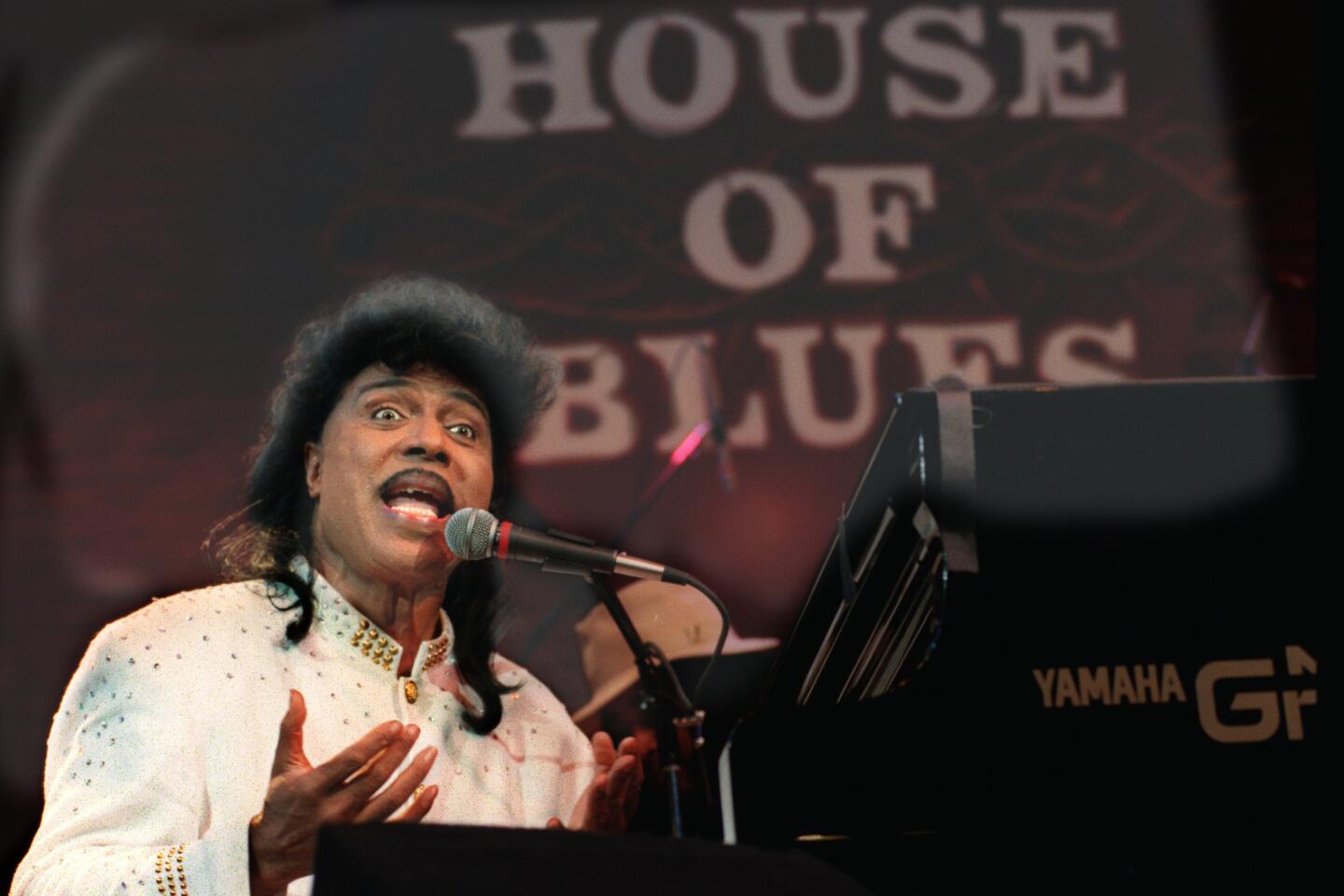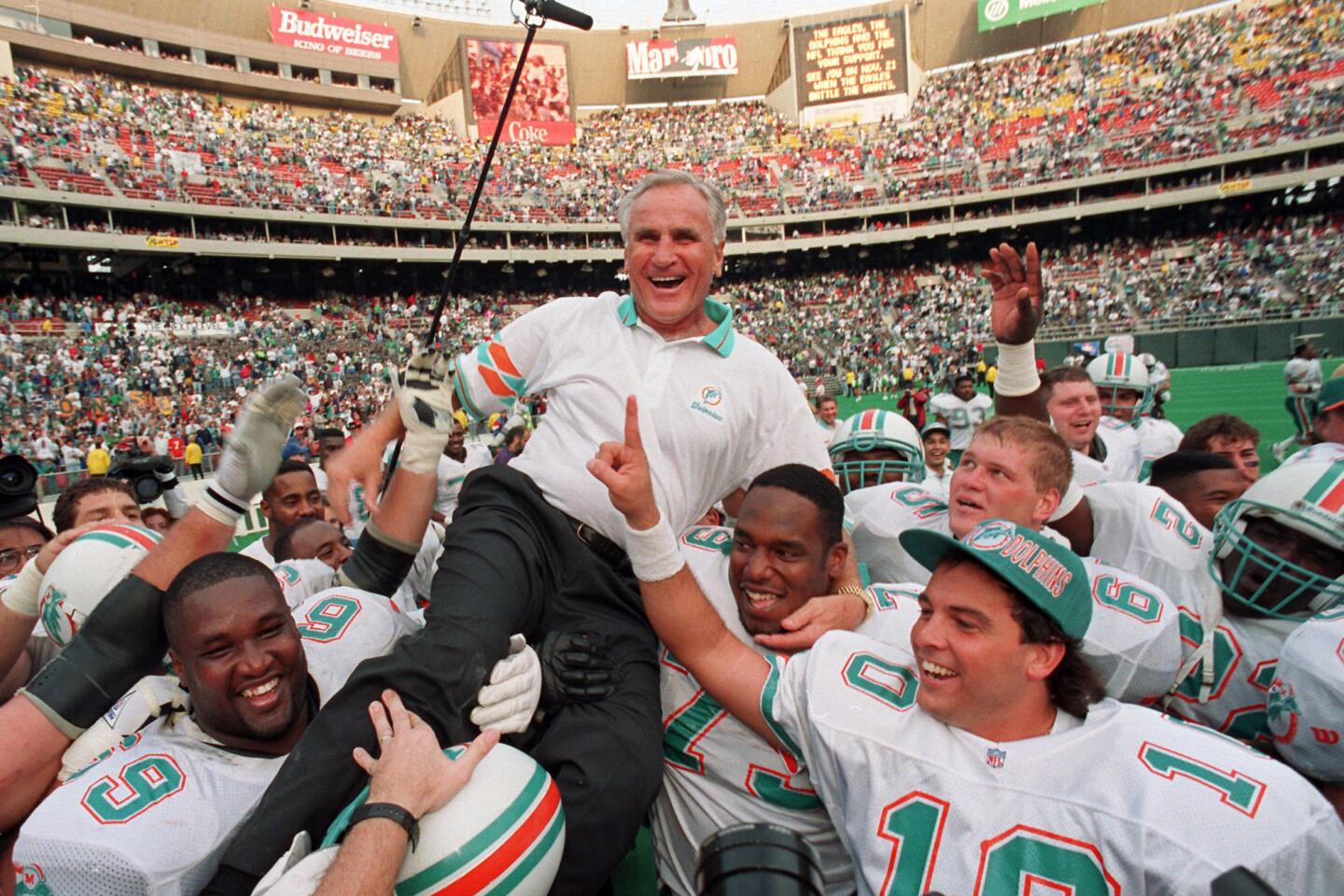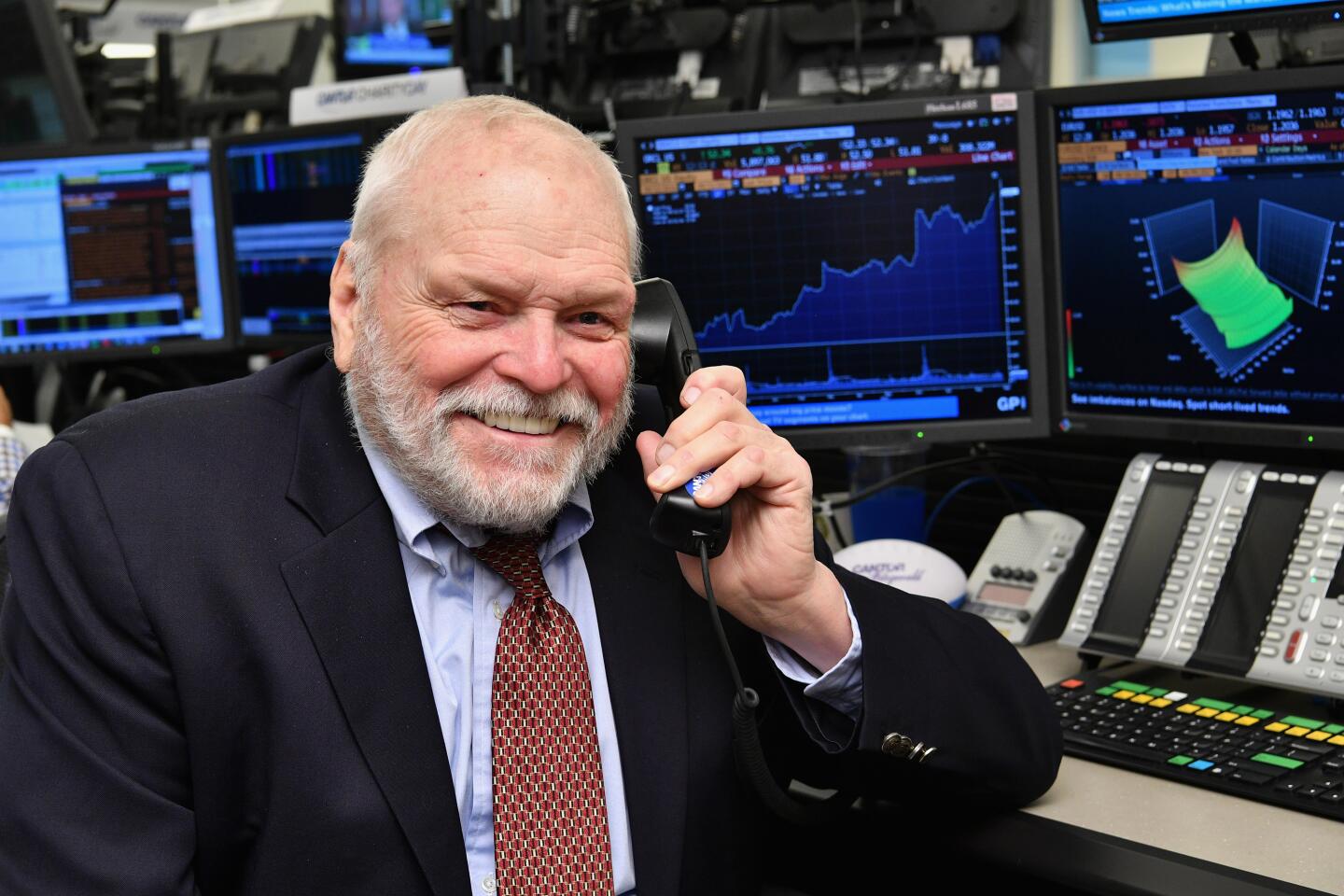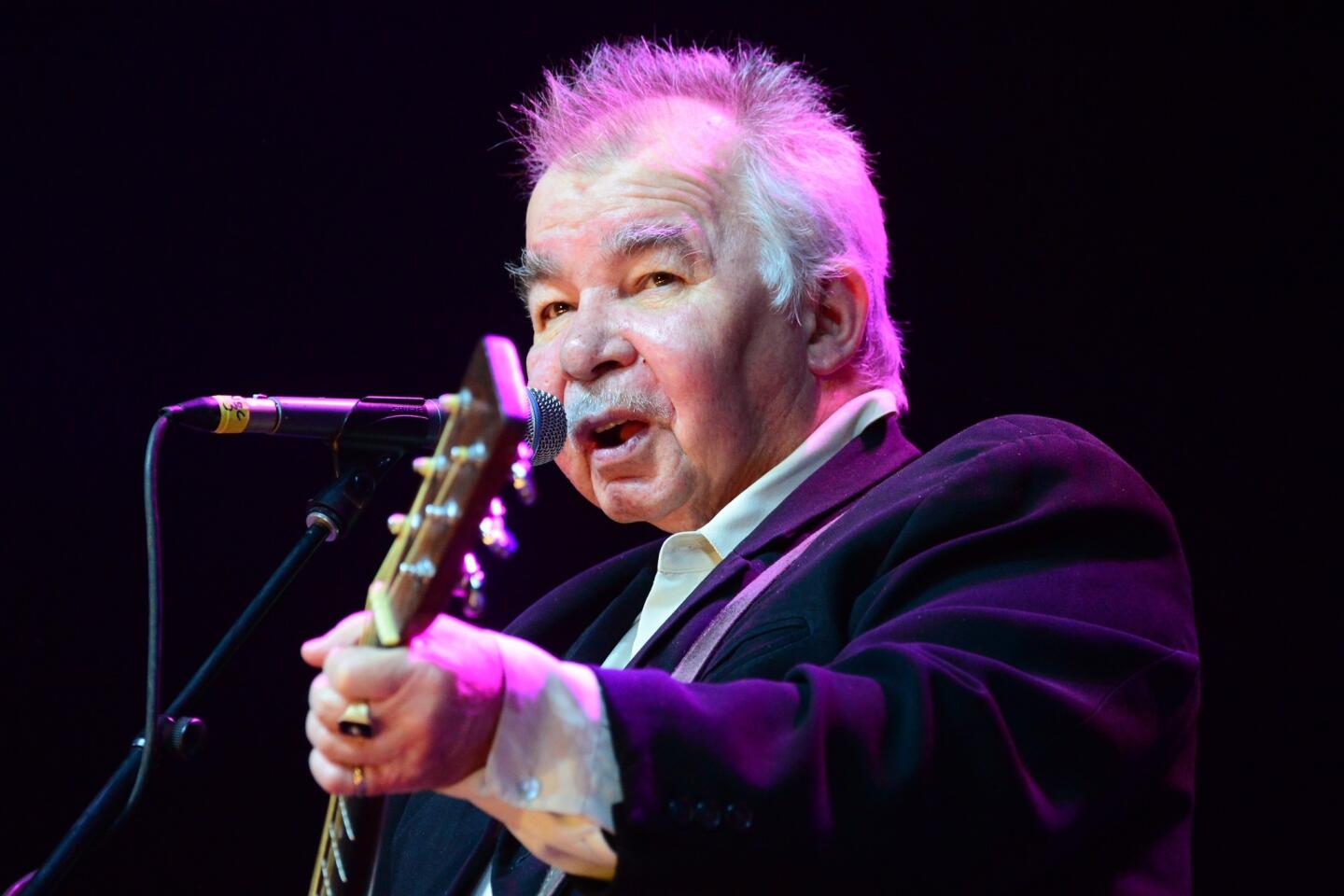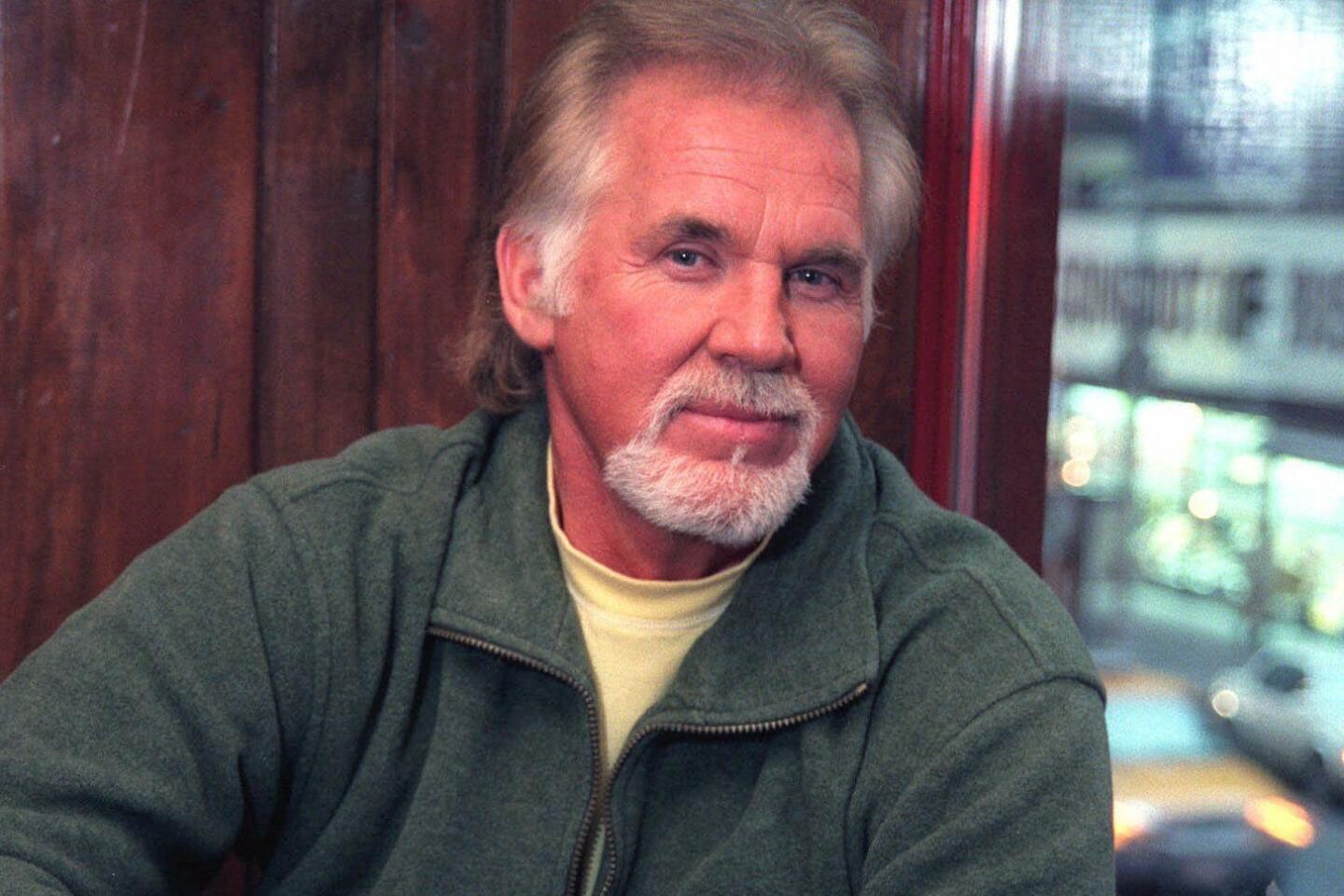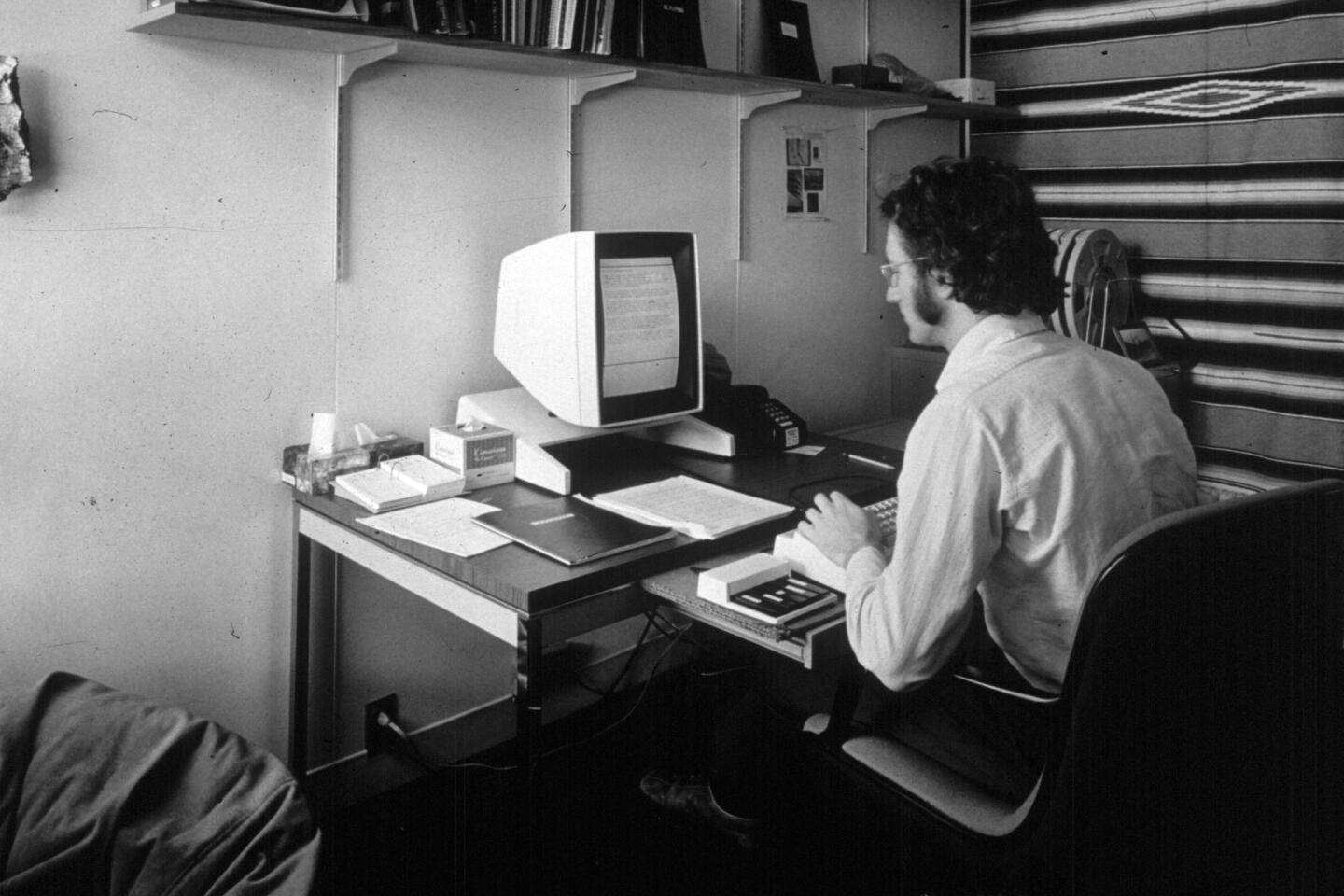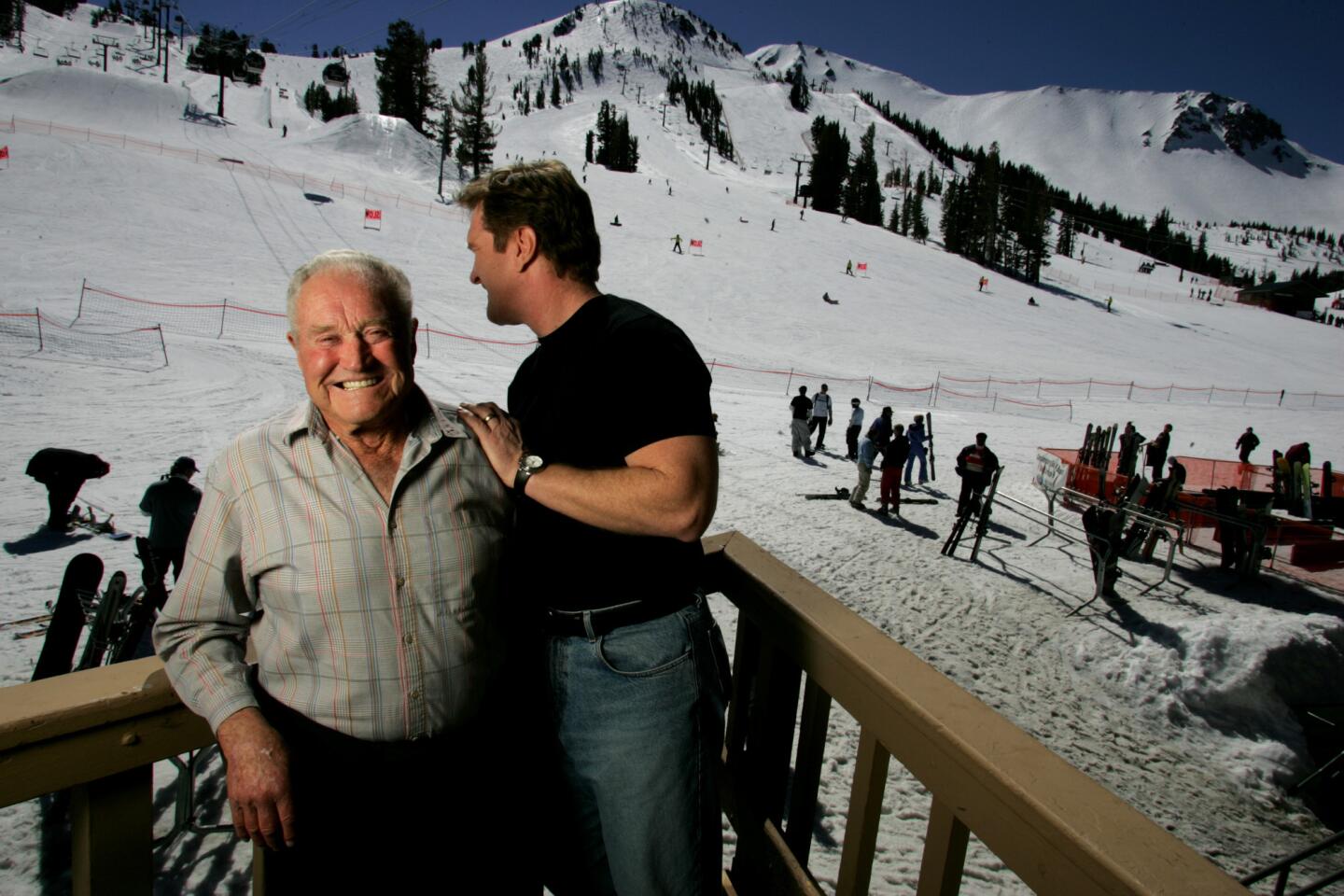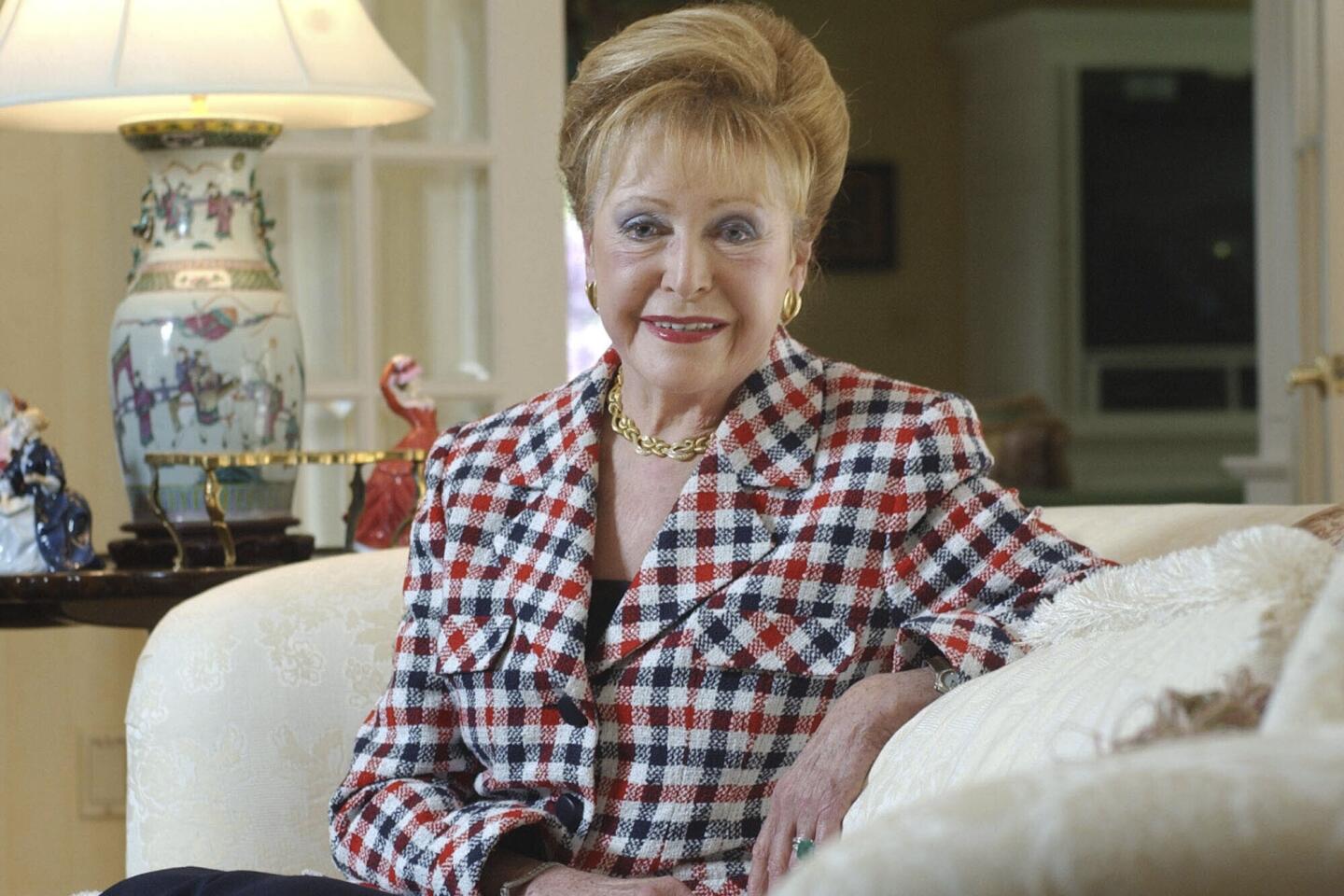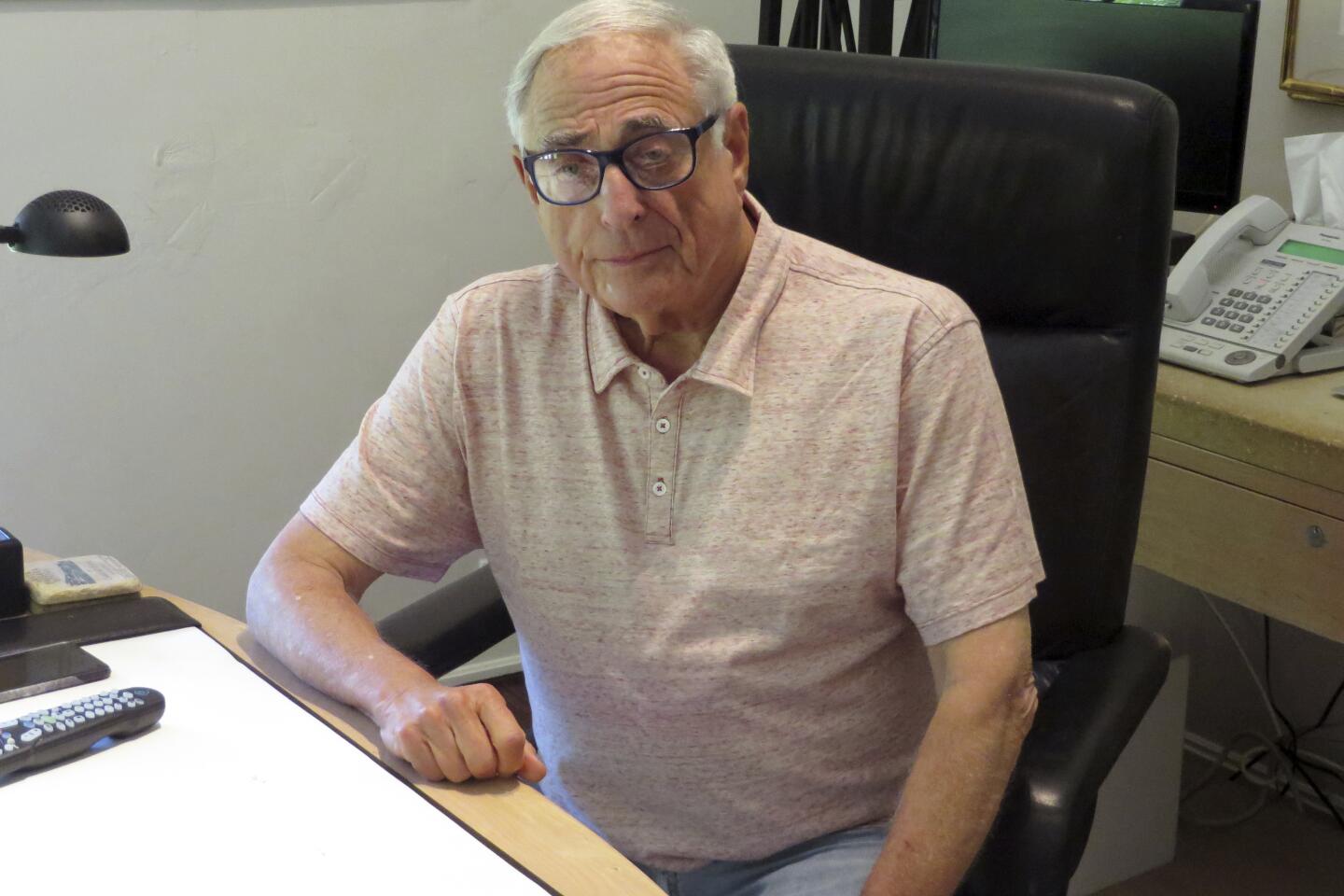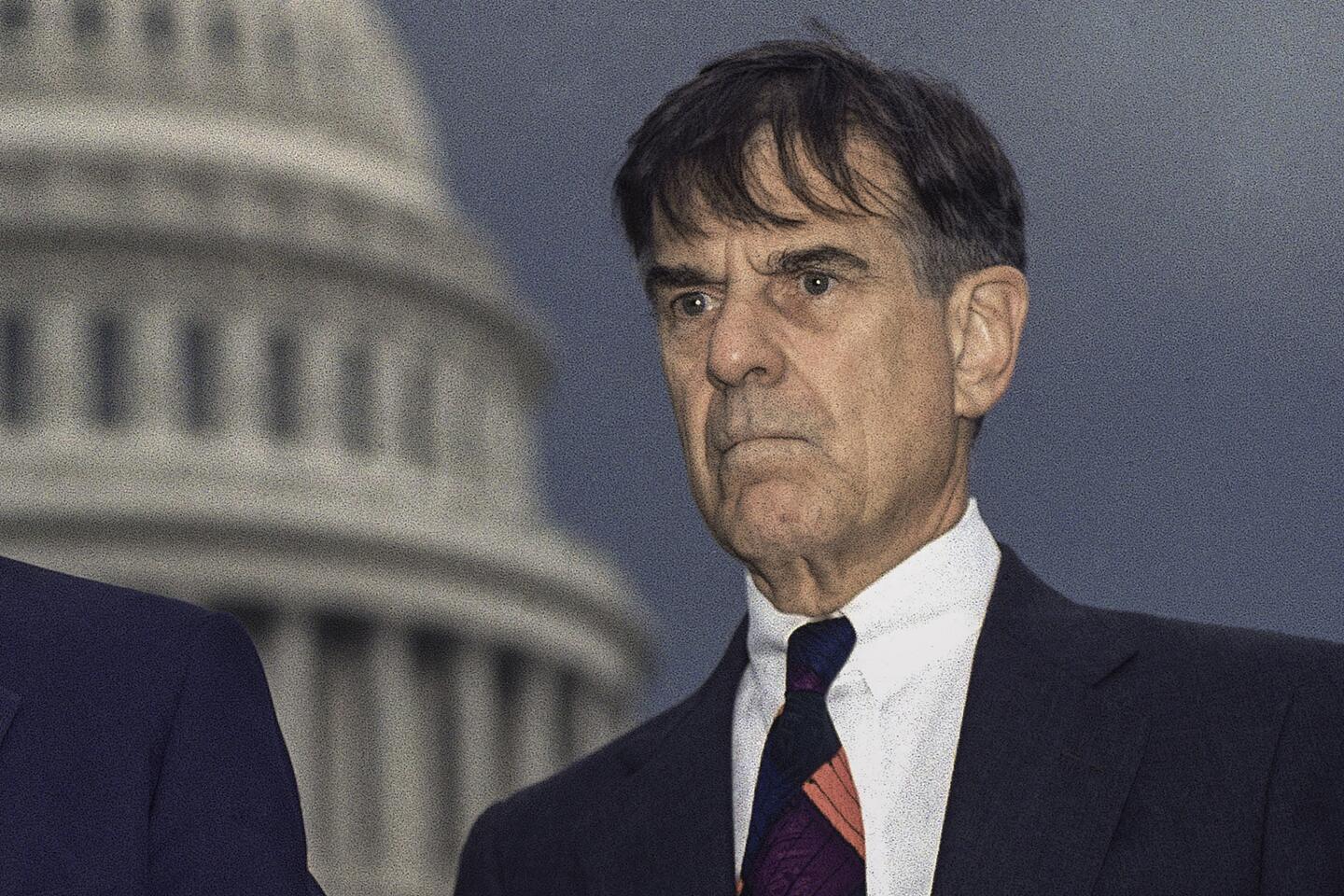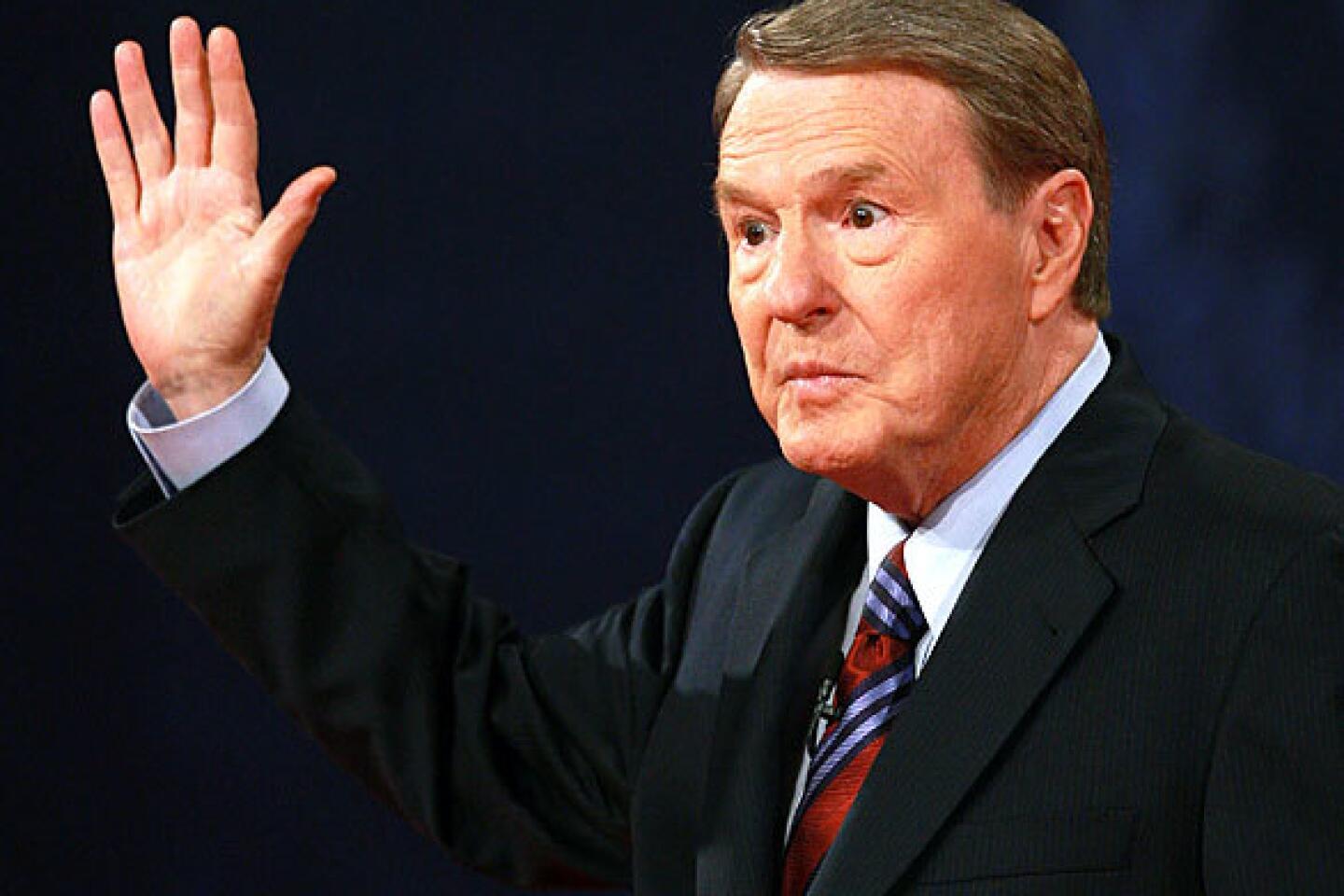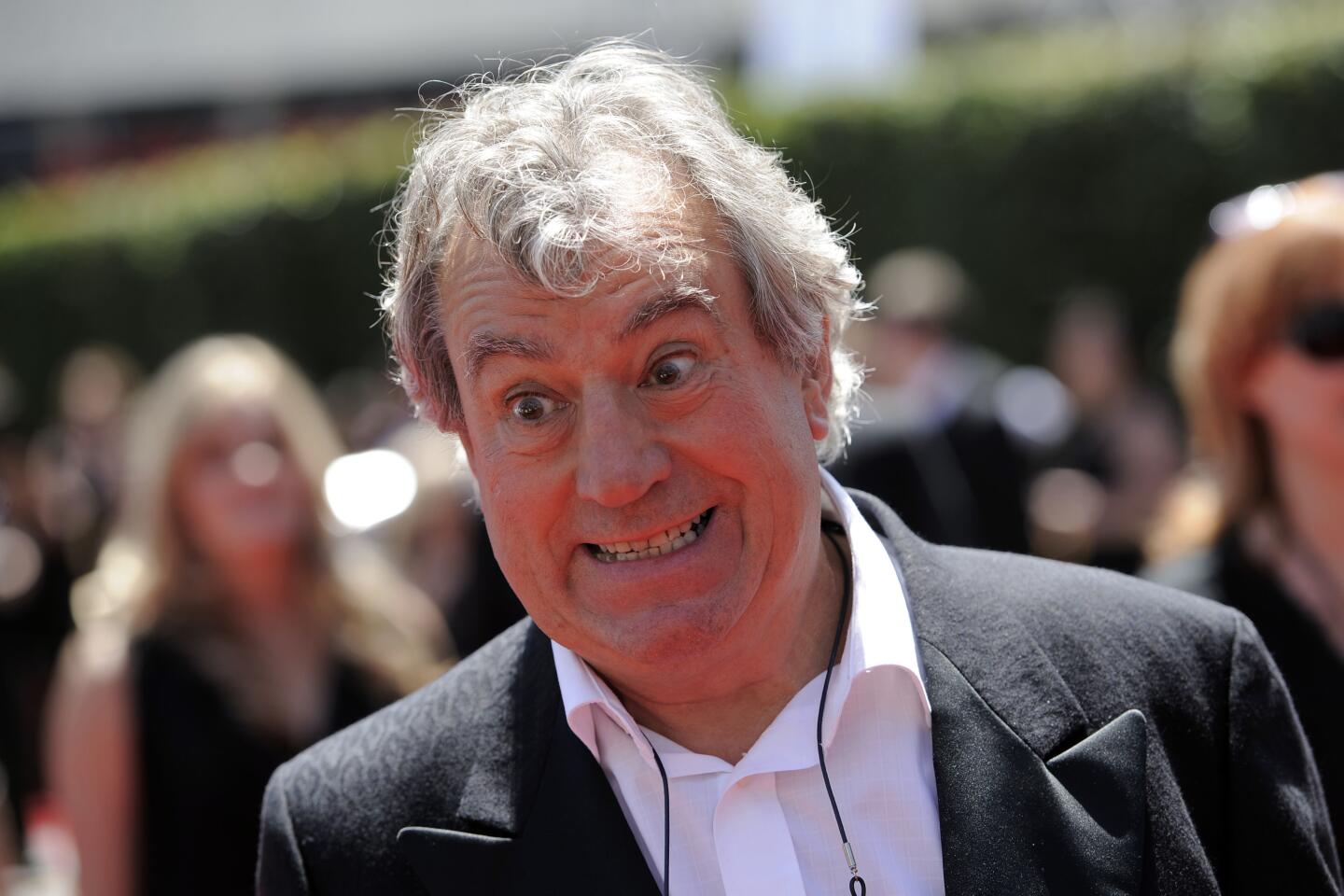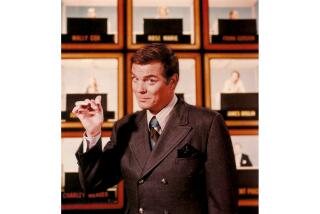Hugh Downs, a television pioneer who became one of the medium’s most enduring, likable and reassuring presences in a five-decade career that included serving as Jack Paar’s late-night announcer-sidekick, and hosting NBC’s “Today” and ABC’s newsmagazine “20/20,” died Thursday at his home in Scottsdale, Ariz.
A family member said the cause of death was heart failure. Downs was 99.
In a broadcasting career that began in 1939 at age 18 when he landed a job as an announcer on a 100-watt radio station in Lima, Ohio, Downs moved into television as an announcer for the NBC-owned station in Chicago in 1950.
More than three decades later, the Guinness Book of Records certified that Downs held the Guinness Record for on-air national commercial television time, with nearly 10,000 as of 1985. His total of more than 15,000 hours was surpassed by Regis Philbin in 2004.
At the time, that included five years on the “Tonight” show, 10 years hosting the game show “Concentration,” nine years hosting the “Today” show, four years hosting “Over Easy” (the PBS series about aging in America), and the first seven of his 21 years hosting “20/20.”
Downs, who won Emmys for his work on “Concentration,” “Today” and “Over Easy,” began his long run on ABC’s award-winning “20/20” in 1978, alongside Barbara Walters, when he took over as host a week after the show’s disastrous premiere with dual hosts (Harold Hayes and Robert Hughes). He stepped down in 1999, when he was 78.
Downs had also been called in to host “Today” after his predecessors on the program — Edwin Newman and John Chancellor — failed to connect with viewers as a replacement for Dave Garroway. Downs’ presence turned the fortunes of the NBC morning franchise around, forming one of the most popular “Today” teams with Walters and Joe Garagiola.
“Hugh had the easiness that made people comfortable in the morning,” former NBC News president and ABC News executive Dick Wald said in a 2011 interview. “His wide range of interests gave him a little bit of knowledge about almost everything under the sun; and a general pleasant demeanor that made everybody feel comfortable. He was really the everyman of that business.”
1/25
Kobe Bryant, Ruth Bader Ginsburg, Sean Connery and more. (Los Angeles Times)
2/25
Rafer Johnson, winner of the 1960 Olympic decathlon gold medal, was a man whose legacy was interwoven with Los Angeles history, beginning with his performances as a world-class athlete at UCLA and punctuated by the night in 1968 when he helped disarm Robert F. Kennedy’s assassin at the Ambassador Hotel. Johnson lit the Olympic flame at the opening of the 1984 Summer Games in Los Angeles. He was 86.
(Mel Melcon / Los Angeles Times) 3/25
With his quick wit and easy smile,
Alex Trebek drove the game show “Jeopardy!” up the ratings charts and became a welcome television host in America’s living rooms. As the quiz show rolled through the decades, Trebek remained a comfortable fit — in a 2014 Reader’s Digest poll, Trebek ranked as the eighth-most trusted person in the United States, right behind Bill Gates and 51 spots above Oprah Winfrey. He was 80.
(Los Angeles Times) 4/25
Guitarist Eddie Van Halen’s speed and innovations along the fretboard inspired a generation of imitators as the band bearing his name rose to MTV stardom and multiplatinum sales over 10 consecutive albums. The streak made Van Halen one of the most successful bands in rock history, including two albums that reached diamond status (10 million copies sold): 1978’s debut “Van Halen” and 1984’s “1984.” He was 65.
(Wibbitz/Getty) 5/25
Justice Ruth Bader Ginsburg championed women’s rights — first as a trailblazing civil rights attorney who methodically chipped away at discriminatory practices, then as the second woman to serve on the Supreme Court, and finally as an unlikely pop culture icon. A feminist hero dubbed Notorious RBG, Ginsburg became the leading voice of the court’s liberal wing, best known for her stinging dissents on a bench that mostly skewed right since her 1993 appointment. She was 87.
(Kiichiro Sato / Associated Press) 6/25
Chadwick Boseman’s breakout role was playing Dodger Jackie Robinson in the 2013 sports biopic “42.” The next year, he made an electrifying lead turn as James Brown, the Godfather of Soul, in “Get on Up.” Then came the role that would change his career: As
Black Panther, the Marvel Cinematic Universe’s first Black superhero, Boseman became the face of Wakanda to millions of fans around the world and helped usher in a new and inclusive era of superhero blockbusters. He was 43.
(Jay L. Clendenin / Los Angeles Times) 7/25
Sumner Redstone outmaneuvered rivals to assemble one of America’s leading entertainment companies, now called ViacomCBS, which boasts CBS, Comedy Central, MTV, Nickelodeon, BET, Showtime, the Simon & Schuster book publisher and Paramount Pictures movie studio. Unlike contemporaries Rupert Murdoch and Ted Turner, Redstone was not a visionary, but rather a hard-charging lawyer and deal maker who pursued power and wealth through the accumulation of content companies. He was 97.
(Brian Vander Brug / Los Angeles Times) 8/25
Regis Philbin reigned for decades as the comfortable and sometimes cantankerous morning host of “Live,” first with Kathie Lee Gifford and later Kelly Ripa, above. He earned Emmy nominations by the armful, hosted New Year’s Eve specials, rode in parades, set a record for the most face-time hours on television and helped reinvigorate prime-time game shows with “Who Wants to Be a Millionaire.” He was 88.
(Charles Sykes / Associated Press) 9/25
Rep. John Lewis famously shed his blood at the foot of a Selma, Ala., bridge in a 1965 demonstration for Black voting rights, and went on to become a 17-term Democratic member of Congress. An inspirational figure for decades, Lewis was one of the last survivors among members of the Rev. Martin Luther King Jr.’s inner circle. He was 80.
(Mark Humphrey / Associated Press) 10/25
Country music firebrand and fiddler Charlie Daniels started out as a session musician, which included playing on Bob Dylan’s 1969 album “Nashville Skyline,” and beginning in the early 1970s toured endlessly with his own band, sometimes doing 250 shows a year. In 1979, Daniels had a crossover smash with “The Devil Went Down to Georgia,” which topped the country chart, hit No. 3 on the pop chart and was voted single of the year by the Country Music Assn. He was 83.
(Rick Diamond / Getty Images for IEBA) 11/25
Carl Reiner first came to national attention in the 1950s on Sid Caesar’s “Your Show of Shows,” where he wrote alongside Mel Brooks, Neil Simon and other comedy legends. He later created “The Dick Van Dyke Show,” one of TV’s most fondly remembered sitcoms, and directed hit films including “The Comic” (1969), starring Van Dyke; “Where’s Poppa?” (1970), starring George Segal and Ruth Gordon; “Oh, God!” starring George Burns and John Denver; and four films starring Steve Martin. He was 98.
(Associated Press ) 12/25
The flamboyant, piano-pounding Little Richard roared into the rock ‘n’ roll spotlight in the 1950s with hits such as “Tutti-Frutti,” “Long Tall Sally” and “Good Golly, Miss Molly.” The Georgia native’s raucous sound fused gospel
fervor and R&B sexuality, profoundly influencing the Beatles, James Brown (who succeeded him in one of his early bands), Jimi Hendrix (one of his backup musicians in the mid-’60s) and Bruce Springsteen. He was 87.
(Boris Yaro / Los Angeles Times) 13/25
Don Shula was the NFL’s winningest coach, leading the 1972 Miami Dolphins to the league’s only undefeated season. He coached the Baltimore Colts to one Super Bowl and the Dolphins to five, winning Lombardi Trophies after the 1972 and ’73 seasons. He was 90.
(ASSOCIATED PRESS) 14/25
Former Egyptian
President Hosni Mubarak crushed dissent for decades until the 2011 Arab Spring movement drove him from power. During his presidency, which spanned nearly 30 years, he protected Egypt’s stability as intifadas roiled Israel and the Palestinian territories, the U.S. led two wars against Iraq, Iran fomented militant Shiite Islam across the region and global terrorism complicated the divide between East and West. He was 91.
(Sameh Sherif / AFP/Getty Images) 15/25
Among his 40-odd films,
burly Brian Dennehy played a sheriff who jailed Rambo in “First Blood,” a serial killer in “To Catch a Killer” and a corrupt sheriff in “Silverado.” On Broadway, he was awarded Tonys for his roles in “Death of a Salesman” (1999) and “Long Day’s Journey Into Night” (2003). He was 81.
(Dia Dipasupil) 16/25
Singer-songwriter John Prine broke onto the folk scene in 1971 with a self-titled album that included two songs brought to broader audiences by Bette Midler and Bonnie Raitt: “Hello in There” and “Angel From Montgomery,” respectively. In 2019, he was elected to the Songwriters Hall of Fame. He was 73.
(Frazer Harrison / Getty Images for Stagecoach) 17/25
Country singer Kenny Rogers racked up an impressive string of hits — initially as a member of The First Edition starting in the late 1960s and later as a solo artist and duet partner with Dolly Parton — and earned three Grammy Awards, 19 nominations and a slew of accolades from country-music awards shows. Country purists balked at his syrupy ballads, but his fans packed arenas that only the titans of rock could fill. He was 81.
(Suzanne Mapes / Associated Press) 18/25
Xerox researcher Larry Tesler pioneered concepts that made computers more user-friendly, including moving text through cut, copy and paste. In 1980, he joined Apple, where he worked on the Lisa computer, the Newton personal digital assistant and the Macintosh. He was 74.
(AP) 19/25
Ski industry pioneer Dave McCoy transformed a remote Sierra peak into the storied Mammoth Mountain Ski Area. Over six decades, it grew from a downhill depot for friends to a profitable operation of 3,000 workers and 4,000 acres of ski trails and lifts, a mecca for generations of skiers and boarders. He was 104. (Genaro Molina / Los Angeles Times)
20/25
Screen icon
Kirk Douglas brought a clenched-jawed intensity to an array of heroes and heels, receiving Oscar nominations for his performances as an opportunistic movie mogul in the 1952 drama “The Bad and the Beautiful” and as Vincent van Gogh in the 1956 drama “Lust for Life.” As executive producer of “Spartacus,” Douglas helped end the Hollywood blacklist by giving writer Dalton Trumbo screen credit under his own name. He was 103.
(Annie Wells / Los Angeles Times) 21/25
“Queen of Suspense”
Mary Higgins Clark became a perennial best-seller, writing or co-writing “A Stranger Is Watching,” “Daddy’s Little Girl” and more than 50 other favorites. Her sales topped 100 million copies, and many of her books, including “A Stranger is Watching” and “Lucky Day,” were adapted for movies and television. She was 92.
(Associated Press) 22/25
Fred Silverman was the head of programming at CBS, where he championed a string of hits including “The Mary Tyler Moore Show,” “All in the Family,” “MASH” and “The Jeffersons.” Later at ABC, he programmed “Laverne & Shirley,” “The Love Boat,” “Happy Days” and the 12-hour epic saga “Roots.” He was 82.
(Associated Press) 23/25
Former California
Rep. Fortney “Pete” Stark Jr. represented the East Bay in Congress for 40 years. The influential Democrat helped craft the Affordable Care Act, the signature healthcare achievement of the Obama administration, and also created the 1986 law best known as COBRA, which allows workers to stay on their employer’s health insurance plan after they leave a job. He was 88.
(Associated Press) 24/25
News anchor
Jim Lehrer appeared 12 times as a presidential debate moderator and helped build “PBS NewsHour” into an authoritative voice of public broadcasting. The program, first called “The Robert MacNeil Report” and then “The MacNeil-Lehrer Report,” became the nation’s first one-hour TV news broadcast in 1983. Lehrer was 85.
(David McNew / Getty Images) 25/25
Terry Jones was a founding member of the Monty Python troupe who wrote and performed for their early ’70s TV series and films including “Monty Python and the Holy Grail” in 1975 and “Monty Python’s Life of Brian” in 1979. After the Pythons largely disbanded in the 1980s, Jones wrote books on medieval and ancient history, presented documentaries, wrote poetry and directed films. He was 77.
(Associated Press) At the beginning of his television career at the NBC affiliate in Chicago, Downs was the announcer for the classic “Kukla, Fran & Ollie” puppet show and the soap opera “Hawkins Falls.” He moved to New York City in 1954 to announce NBC’s “The Home Show,” a new morning program starring Arlene Francis.
Downs went on to be the announcer for the last season of “Caesar’s Hour” on NBC before Paar tapped him to be his announcer on the network’s “Tonight” show in 1957.
“Tonight” turned Paar into a national TV sensation and made Downs a TV personality in his own right after Paar began asking him to sit on the panel on a regular basis, and he became Paar’s frequent replacement host.
Their banter before the first guests came out led to Downs displaying his knowledge of music, psychology, astronomy, skin diving and other subjects.
His diverse knowledge amused Paar, who loved to ask him questions and dubbed him a “walking encyclopedia.”
“Tonight,” Paar once joked on air, “Hugh is going to do a medley of famous Supreme Court decisions.”
In a 2001 interview with the Indianapolis Star, Downs said working with the mercurial “Tonight” show host “was like riding a bronco.”
“And,” he said, “it made almost everything else I did in television seem a little bit tame, because you never knew what was going to happen — and it happened every night.”
That was never more so than on a night in February 1960 when Paar quit the show and walked off the stage the day after NBC censored his telling of a humorous story featuring a “WC” (the abbreviation for water closet) without telling him.
That left Downs to host the remainder of that night’s show.
“Jack frequently does things he regrets,” he told the audience. “but I’d like to think that this is not final — and that Jack will be back.”
Paar returned to the show 25 days after his dramatic departure, and Downs continued as announcer until Paar left the show for good in 1962 and Johnny Carson became the “Tonight” show host with Ed McMahon as his announcer.
While continuing his hosting duties on “Concentration,” Downs became the new host of the “Today” show in 1962, a job he held until 1971.
Living in Carefree, Ariz., after leaving “Today,” Downs over the next several years narrated a series of environmental and historical specials for NBC, wrote a number of books, did some teaching and became a visiting fellow at the Center for the Study of Democratic Institutions in Santa Barbara.
He was hosting “Over Easy” in 1978 when he was asked to step in as host of “20/20.”
Downs’ low-key demeanor belied an adventurous spirit that included learning to scuba dive for “The Home Show.”
For segments of the “Today” show, he rode a killer whale at Sea World in San Diego, went through training to get his private pilot’s license and drove a Formula A racing car.
For “20/20,” he traveled to the South Pole and participated in an underwater search for a lost Spanish galleon in the British Virgin Islands.
For fun and another challenge, he once sailed his own boat (with his son and a crew) on a five-month voyage across the Pacific.
The eldest of three brothers, Downs was born Feb. 14, 1921, in Akron, Ohio. His family moved to a farm outside Lima, Ohio, when he was 2 and later moved into town.
After graduating from high school in 1938, Downs entered Bluffton College in Bluffton, Ohio, but he had to drop out after a year for financial reasons and his father suggested he get a job.
He wound up landing a job as announcer at tiny radio station WLOK in Lima, where he initially worked seven days a week for $12.50 a week.
Looking back, he recalled in a 1997 interview for the Archive of American Television, he wondered why he stayed in radio.
“I had the worst case of mike fright of anybody I ever even read about,” he said. “My blood turned to ice water and my knees to jelly. It never showed in my voice, but I was terrified when I would go on the air.
“Why I didn’t quit, I don’t know. But I was just determined to be a broadcaster, and I got over that after awhile.”
Downs’ wife of 75 years, Ruth Shaheen, died in 2017. He is survived by a daughter, Deirdre, and a son Hugh Raymond, known as H.R., two grandchildren and four great-grandchildren.
McLellan is a former Times staff writer
